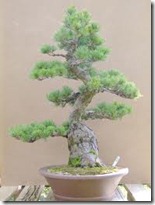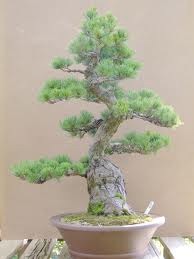 With over a hundred species of bonsai available out there in the market, bonsai lovers are spoilt for choices. However, each bonsai is like a snowflake; each has unique characteristics on its own. Different types of bonsai require different cultivation methods. Some bonsai are more difficult to grow than others.
With over a hundred species of bonsai available out there in the market, bonsai lovers are spoilt for choices. However, each bonsai is like a snowflake; each has unique characteristics on its own. Different types of bonsai require different cultivation methods. Some bonsai are more difficult to grow than others.
There is a huge misconception that bonsai must be cultivated indoors. Bonsai owners are worried that their bonsai are unable to withstand the outdoors elements. Most bonsai owners forget that bonsai are primarily still trees and there is nothing wrong cultivating them outdoors. Of course there are still bonsai that can only be grown indoors. These are bonsai that come from tropical regions that cannot survive in a temperate environment. When choosing types of bonsai, be sure if the bonsai are suited to grow indoors or outdoors.
Outdoor and Indoor Bonsai
Bonsai can be generally divided into indoor and outdoor bonsai. However, this does not mean that bonsai should be confined to just the home or the garden. Bonsai owners do from time to time bring outdoor bonsai to indoor bonsai. In the past, the Chinese and Japanese brought their outdoor bonsai to their homes to be used as decoration. They are placed in homes for just one day or two before they are brought outdoors again. This traditional practice may have popularized the misconception among the West that bonsai must be cultivated indoors.
The first step in choosing a bonsai is to have a look at the home environment of the house. If growing bonsai for the first time, then it is highly recommended that a person begin with outdoor bonsai first since they are easier to grow than indoor bonsai. Begin with easy species like figs or elms. Once enough experience and confidence is gained, feel free to move on to tougher species.
Indoor Bonsai
Amateur bonsai growers prefer to start with indoor bonsai since they find it easier to keep watch over their bonsai. Growers can also used them as house decoration.
However, indoor bonsais are more difficult to maintain. Most bonsai do not get enough moisture and humidity indoor. Indoor environment will have to be manipulated to suit the bonsai. Indoor bonsai must be watered regularly to provide the correct humidity and requires the correct temperature to thrive. More care and effort must be put in when taking care of a indoor bonsai. More attention has to be paid to an indoor bonsai rather than an outdoor bonsai. The higher level of difficulty to take car of an indoor bonsai may explainwhy indoor bonsai have a shorter lifespan than outdoor bonsai.
Outdoor Bonsai
Outdoor bonsai on the other hand are far easier to maintain. Because they are easier to maintain, they usually have a longer lifespan than indoor bonsai. Some can live to become a centurion. It is not uncommon to hear of bonsai being passed down from generation to generation. Another great thing about outdoor bonsai is that there is a greater variety of species out there and are generally more colorful than their indoor counterparts.
Choosing the correct type of bonsai requires a lot of forethought. Consider the level of experience and the type of home environment that can be provided for the bonsai. Regardless of the decision to place indoors or outdoors, all bonsais require passionate owners to thrive.

Deprecated: strpos(): Passing null to parameter #1 ($haystack) of type string is deprecated in /home/agriviek8Qv/agriviet.net/public_html/wp-includes/comment-template.php on line 2522